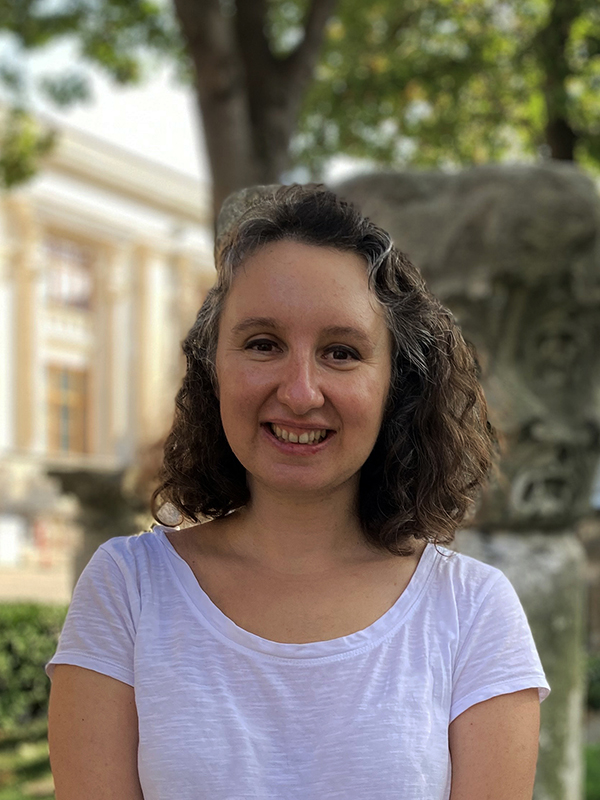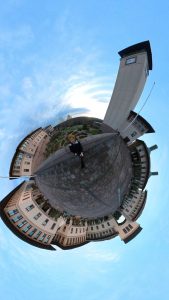
İrem Yıldız, Oxford Üniversitesi’nde Doğu Çalışmaları alanında doktora adayıdır. Doktora tez projesi, geç dönem Osmanlı İmparatorluğu’nda (1868-1914) körlüğün algılanma biçimlerini ve körlük deneyimlerini inceliyor. Yıldız, körlüğün tarihini birbiriyle bağlantılı üç kavram üzerinden irdeliyor: Yoksulluk, engellilik/tıp ve eğitim. Araştırması, Osmanlı Devleti’nin geç on dokuzuncu yüzyıl İstanbul’unda bulaşıcı göz hastalıklarının, kör dilencilerin ve görme engelli işsiz bireylerin artışına nasıl karşılık verdiğini de incelemektedir. ANAMED’de olduğu süre boyunca, Yıldız, Osmanlı Devleti’nin görme engellilerin şehirdeki yaşamlarını giderek nasıl kontrol altına aldığını ve onların İstanbul’un hastaneleri, okulları, darülacezesi ve sokaklarındaki günlük deneyimlerini nasıl şekillendirdiğini araştırıyor.
Research Title: Blindness in Istanbul: Poverty, Disability, and Education in the Ottoman Empire (1868–1914)
Ms. Yıldız is a PhD candidate in Oriental Studies at the University of Oxford. Her dissertation project examines perceptions and experiences of blindness in the late Ottoman Empire (1868–1914). She investigates the history of blindness through three inter-connected notions: poverty, disability/medicine, and education. Her research further examines how the Ottoman state responded to growing numbers of infectious eye diseases, blind beggars, and unemployed blind individuals in late-nineteenth-century Istanbul. While at ANAMED, she is investigating how the Ottoman state increasingly controlled the urban lives of the blind and shaped their everyday experiences in Istanbul’s hospitals, schools, poorhouses, and streets.
Fellow’s End of Academic Year Research Report:
Blindness in Istanbul: Poverty, Disability, and Education in the Ottoman Empire (1868–1914)
In the 2021–2022 academic year, I was delighted to become a Fellow at ANAMED. This fellowship enabled me to continue my doctoral research within a collegial academic environment. This research is part of my doctoral project that I have been working on in the Department of Oriental Studies at the University of Oxford under the supervision of Prof. Eugene Rogan. The title of my ANAMED project is “Blindness in Istanbul: Poverty, Disability, and Education in the Ottoman Empire (1868–1914).” In this project, I investigate the social arenas in which medical professionals, policymakers, educators, and the general public engaged with the concept of blindness and blind people (children, women, and men) through urban regulations, education practices, and the types of treatment offered. Set within the framework of disability history, this research demonstrates that integrating disability as both a category of analysis and a system of representation deepens and challenges our understanding of blind individuals between 1868 and 1914, a period when government policies controlled and legislated sickness and poverty in Istanbul.
The history of blindness and its relationship to the Ottoman Empire’s socio-cultural, political, and medical contexts remain largely unexplored. This does not mean that blind people were absent in the Ottoman world; rather, they have not yet emerged as a scholarly interest for historians. I argue that because the history of disability has remained solely a subject of medical history in Ottoman studies, rather than being seen as part of a larger cultural or social history, a large historiographical gap remains. For example, the field of medical humanities has recently expanded with a growing number of works in archaeology, architecture, history, and art history. Drawing on recent studies, papers delivered at the 16th International ANAMED Annual Symposium explored places of healing and illness in Anatolia from Classical Antiquity to the modern era. In this symposium, it was fascinating to see that there has been growing interest in medical history among scholars. Yet, as historian Douglas C. Baynton stated, “disability is everywhere in history, once you begin looking for it, but conspicuously absent in the histories we write.”[i] Building on Baynton’s idea, my question is why the history of disability or disabled people is still not visible among medical humanities scholars.
During my ANAMED Fellowship, I have used my time to complete all my archival work. I have utilized a plethora of primary sources located in various archives, libraries, and research centers in Istanbul. The core archival repository is the Turkish Presidency State Archives of the Republic of Turkey, Department of Ottoman Archives (BOA), where I have consulted a wide array of documents related to the welfare, education, and health of blind people. I have also consulted the Ottoman Turkish press, French sources, and missionary sources at Atatürk Kitaplığı, SALT Research, Istanbul Research Institute Library, and ARIT-Istanbul. Thanks to the Koç University Interlibrary Loan (ILL) and journal article request system, it was easy to access many books and articles.
During my first semester at ANAMED, I worked on the chapter focusing on the presence of blind beggars. This chapter analyzes the relationship between blindness and poverty, and in particular, how the Ottoman state sought to control the presence and movement of urban blind beggars in Istanbul from the mid-nineteenth to the early twentieth centuries. It asks two primary questions: first, how was blindness linked to poverty, begging, and being visible in public spaces? Second, how (and why) did the Ottoman state govern blind beggars? While working on this chapter, I strived to locate the voices of ordinary people who are difficult to trace in legal documents.
During my second semester at ANAMED, I focused on the connection between disability studies and medical humanities to explore eye diseases and blindness-related epidemics. The history of eye diseases offers a medical phenomenon with significant political and social influences and impacts. I draw on interrelated fields such as the history of disease, the history of medicine, and the history of public health to examine the interdisciplinary nature of blindness. By studying the interconnections of health, medicine, and socio-political cultures, this chapter explores the emergence of eye disease as a special medical and social concern in the late Ottoman Empire. In doing so, I address how eye diseases were initially accepted as infectious diseases among many Ottoman authorities and how they were subsequently recast as a particular threat to public health in Istanbul. My main research question is: what was the relationship between public health, medicine, and blindness in late Ottoman state and society? In order to answer this question, this research involves medical books, journals, and texts published during the late Ottoman era. It encompasses the works of ophthalmologists to address the medical history of blindness.
ANAMED’s collegial environment has allowed me to exchange ideas and information with like-minded colleagues, while also offering opportunities to meet faculty members at Koç University (Fig. 1). I was a guest lecturer in Dr. Kerem Tınaz’s course “HIST 324: Culture and Society in the Ottoman Empire,” where I shared my ongoing research with third-year undergraduate students and talked about the presence of blind beggars in late Ottoman Istanbul. While at ANAMED, I also attended two international workshops. One was organized by the Oxford History Department for the 2021 Disability History Month Workshop. The other one was co-organized by scholars affiliated with the Technical University of Braunschweig and York St. John University. This workshop, which was entitled “Ugh! Disgust, Repugnant Matters and the Construction of Difference, c.1700–1900,” focused on the history of emotions, particularly the emotion of disgust. These two workshops allowed me to exchange ideas and share my ongoing research with scholars from interdisciplinary fields.

Fig. 1. Koç University Main Campus, January 2022. Photo by İrem Yıldız.
In addition to my academic interactions, I also applied to grants to conduct archival research at several libraries during the next academic year. I am one of the recipients of the Istanbul Research Institute Travel Grant, which will enable me to conduct archival research at the libraries of Ankara this summer. I am also one of the recipients of Harvard University’s Houghton Library Visiting Fellowship for the 2022–2023 academic year. At Houghton Library, I will consult documents related to American philanthropy for the welfare, education, and health of blind people in the Ottoman Empire. These critical primary sources will reveal significant evidence of American missionaries’ impact on education and charity works related to blind children in the late Ottoman Empire.
My project aims to explore how the Ottoman state responded to growing numbers of infectious eye diseases, blind beggars, and unemployed blind individuals in late nineteenth-century Istanbul. This project brings together the urban and institutional histories of Ottoman Istanbul, which have often been studied separately. Writing the history of blindness thus allows me to incorporate and intertwine the historical fields of public health, disease/disability, governance, education, poverty, and welfare, while engaging with broader attempts to write an Ottoman history of blindness with a view to reconstructing the lives of blind individuals in nineteenth-century Istanbul. Examining these sources through a disability history lens offers a significant comparative contribution to the global history of disability and to the international network of historians of blindness.
[i] Douglas C. Baynton, “Disability and the Justification of Inequality in American History,” in The New Disability History: American Perspectives, eds. Paul K. Longmore and Lauri Umansky (New York: New York University Press, 2001), 52.

